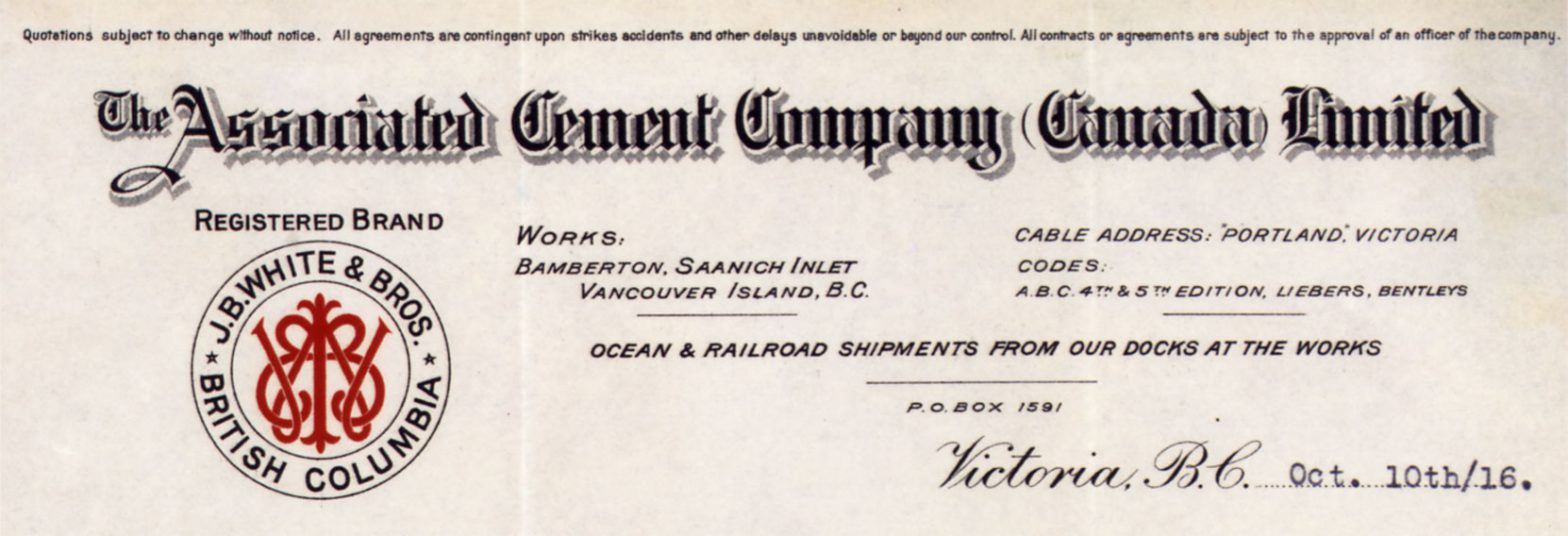Associated Cement Company (Canada) Limited
The Associated Cement Company (Canada) Limited was created in 1914 as the Canadian subsidiary of the Associated Portland Cement Manufacturers (1900), Ltd., the largest British cement company of the period.
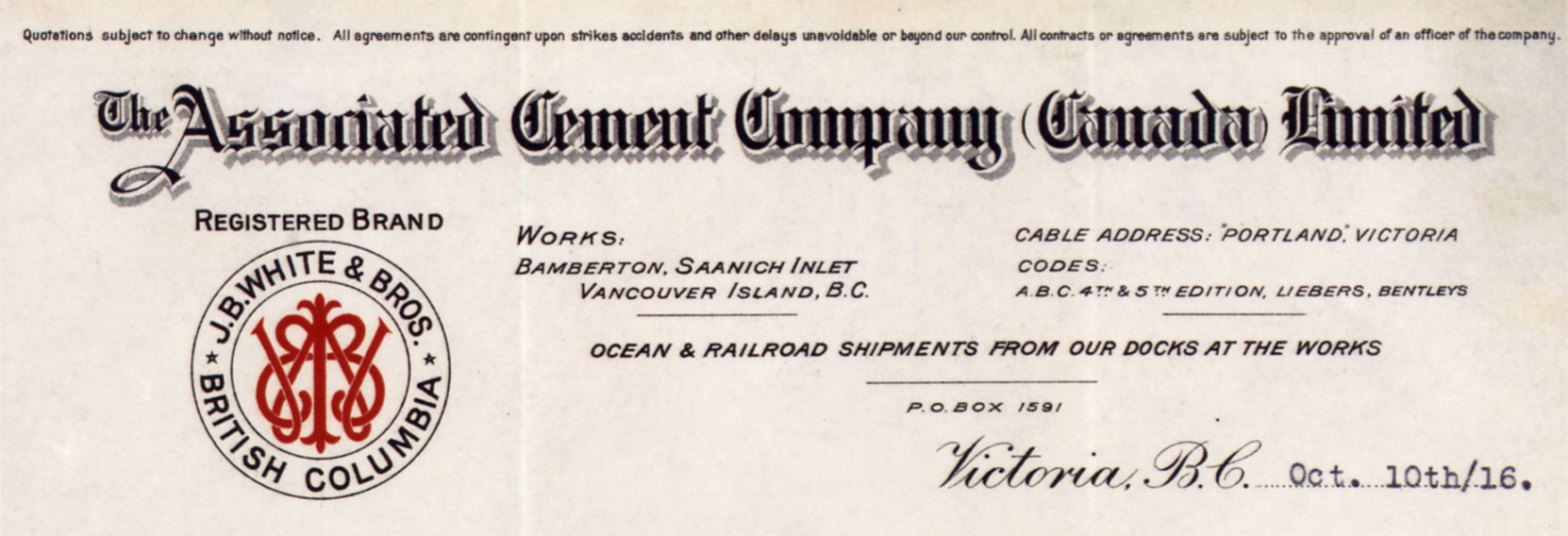
Here is an excerpt from Chapter 7 of our Butchart Gardens History:
“…..Since its Tod Inlet plant began production in 1905, the Vancouver Portland Cement Company had been British Columbia’s only cement producer. Although it faced some competition from imported brands of cement, the company had never had to deal with a rival producer in its own territory. That changed in January 1912, when the Portland Cement Construction Company announced that it had chosen a site on the Malahat, on the western side of Saanich Inlet opposite Tod Inlet, as the site of a new cement factory.
For the Vancouver Portland Cement Company, this was serious competition. The Portland Cement Construction Company was the Canadian subsidiary of the Associated Portland Cement Manufacturers (1900), Ltd. of London, England, which, in 1912, was one of the world’s largest Portland cement producers.
The Associated Portland Cement Manufacturers (1900), Ltd had been formed in 1900 through the amalgamation of 27 small cement companies in the Thames and Medway valleys in southeast England. It was far larger and better capitalized than the Vancouver Portland Cement Company. The British company’s share capital was fixed at £5,000,000 (at 1914 exchange rates, £1 = $4.86 Canadian and U.S. The Canadian and U.S. Dollars were at par between 1900 and 1918) divided in 250,000 £10 Ordinary and 250,000 £10 preference shares. The Associated Portland Cement Manufacturers stock was listed on the London Stock Exchange and, by the company’s 1912 fiscal year, investors had purchased 192,232 Ordinary and 225,854 Preference shares of the Associated Portland Cement Manufacturers stock for a total capital of £4,180,860. And it was a profitable company, reporting net profits of £185,156 for the year ending 30 June 1912, and £336,870 for the year ending 30 June 1913.
In 1912, the Associated Portland Cement Manufacturers’ operations spanned the globe. Apart from its British cement plants, it had factories in Canada, Mexico and South Africa and exported its products to India, South America and other world markets. Another new plant being built in South Africa was scheduled to open in 1914.
Prior to the Vancouver Portland Cement Company’s product entering the British Columbia market in 1905 and ending the province’s reliance on imported cement, the Associated Portland Cement Manufacturers had been one of the leading suppliers of imported cement to British Columbia. As late as 1912, two of the company’s brands, J.B. White & Bros. and K.B.&S., still had a significant share of British Columbia’s cement market……”
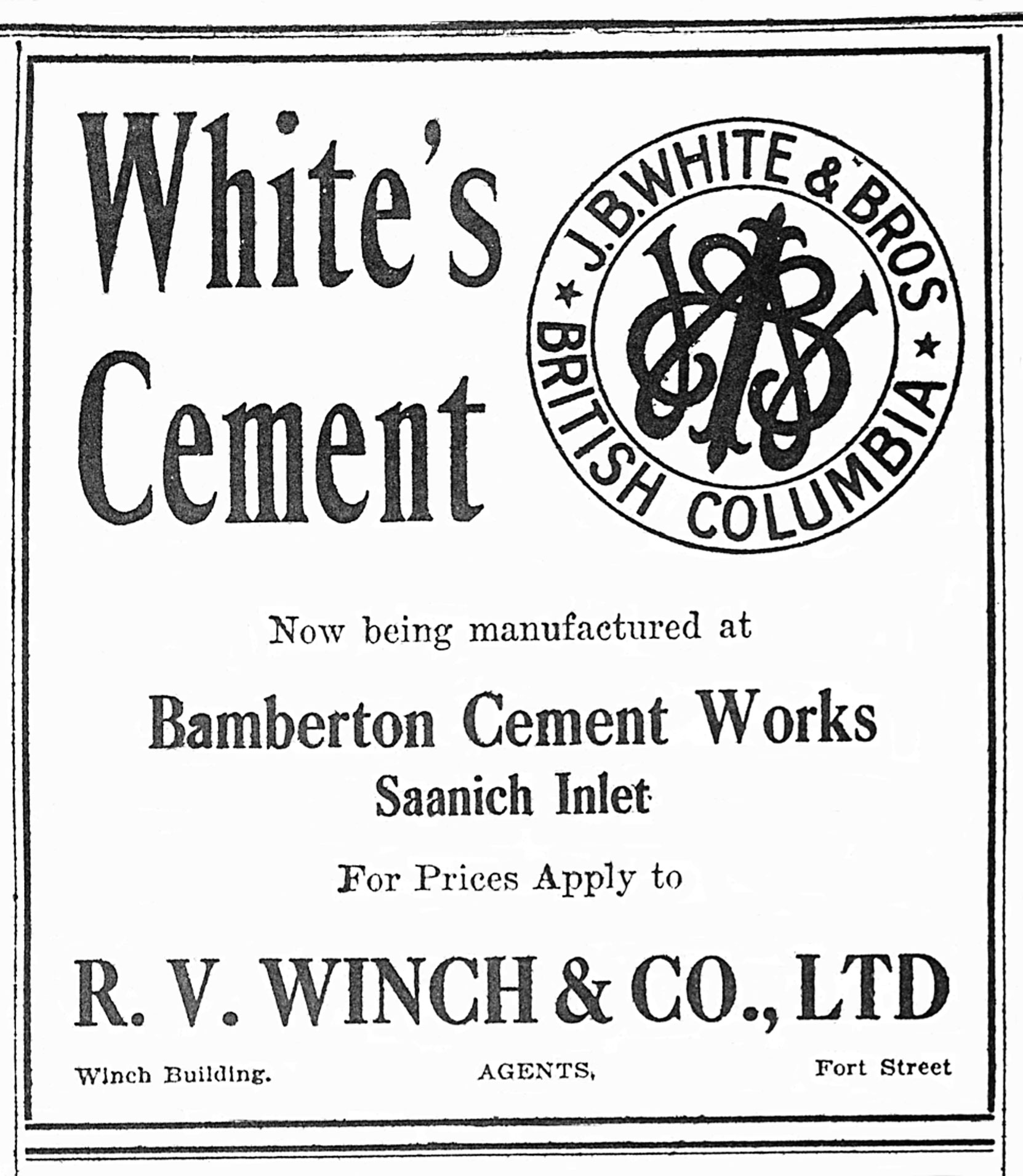
The Portland Cement Construction Company built a new cement factory at Bamberton, which opened in 1913. In 1914, the Associated Portland Cement Manufacturers (1900), Ltd. changed the name of its Canadian subsidiary from the Portland Cement Construction Company to the Associated Cement Company (Canada) Limited.
The Associated Cement Company (Canada) Limited continued to operate the Bamberton Cement Works until 1919.
In February 1919 the Associated Cement Company (Canada) Limited was merged with the Vancouver Portland Cement Company to create the British Columbia Cement Company.
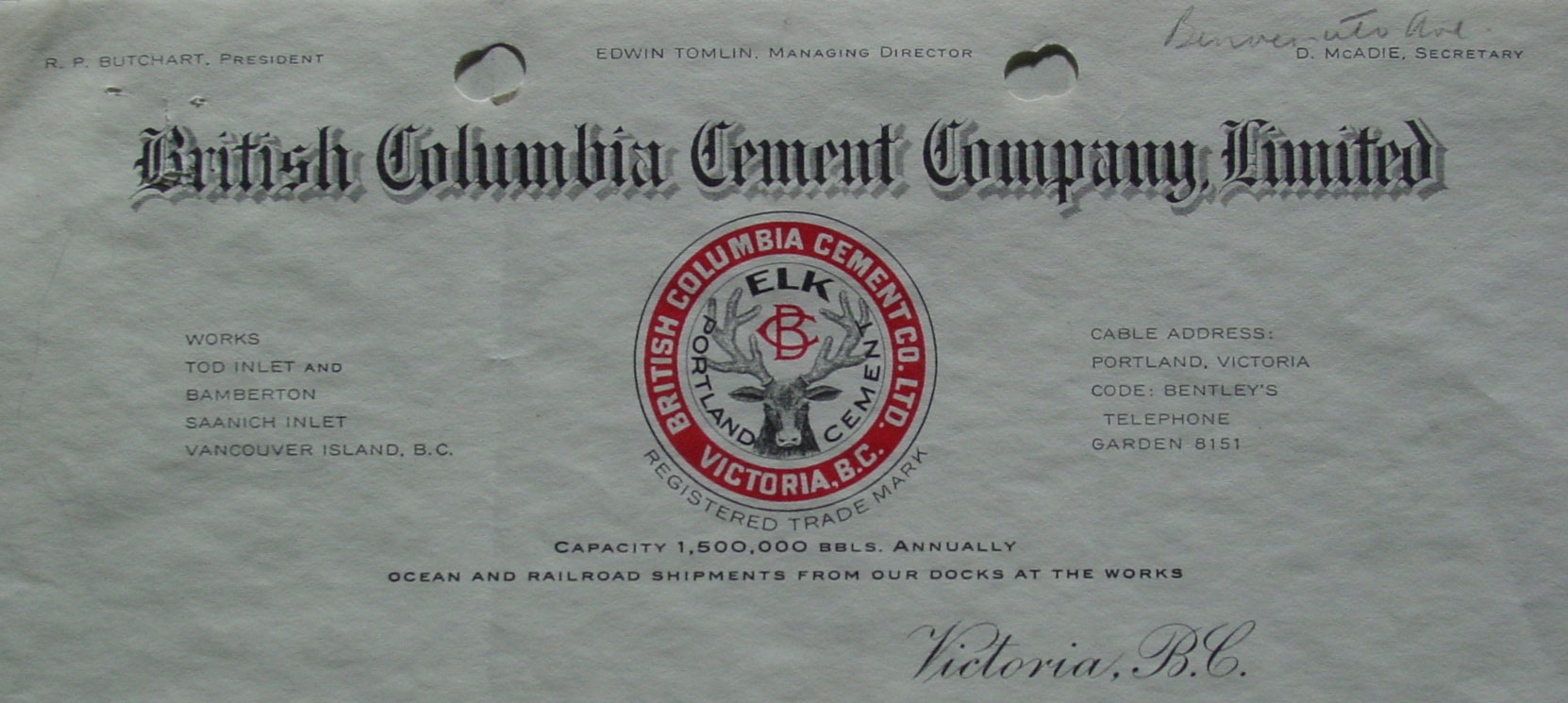
The British Columbia cement Company continued to operate the Bamberton plant until 1980, when the cement factory was closed.
The site was subsequently sold several times. In 2015 the Bamberton site was acquired by the malahat First Nation.
Here are some photographs of the ruins of the Bamberton Cement factory in 2004:
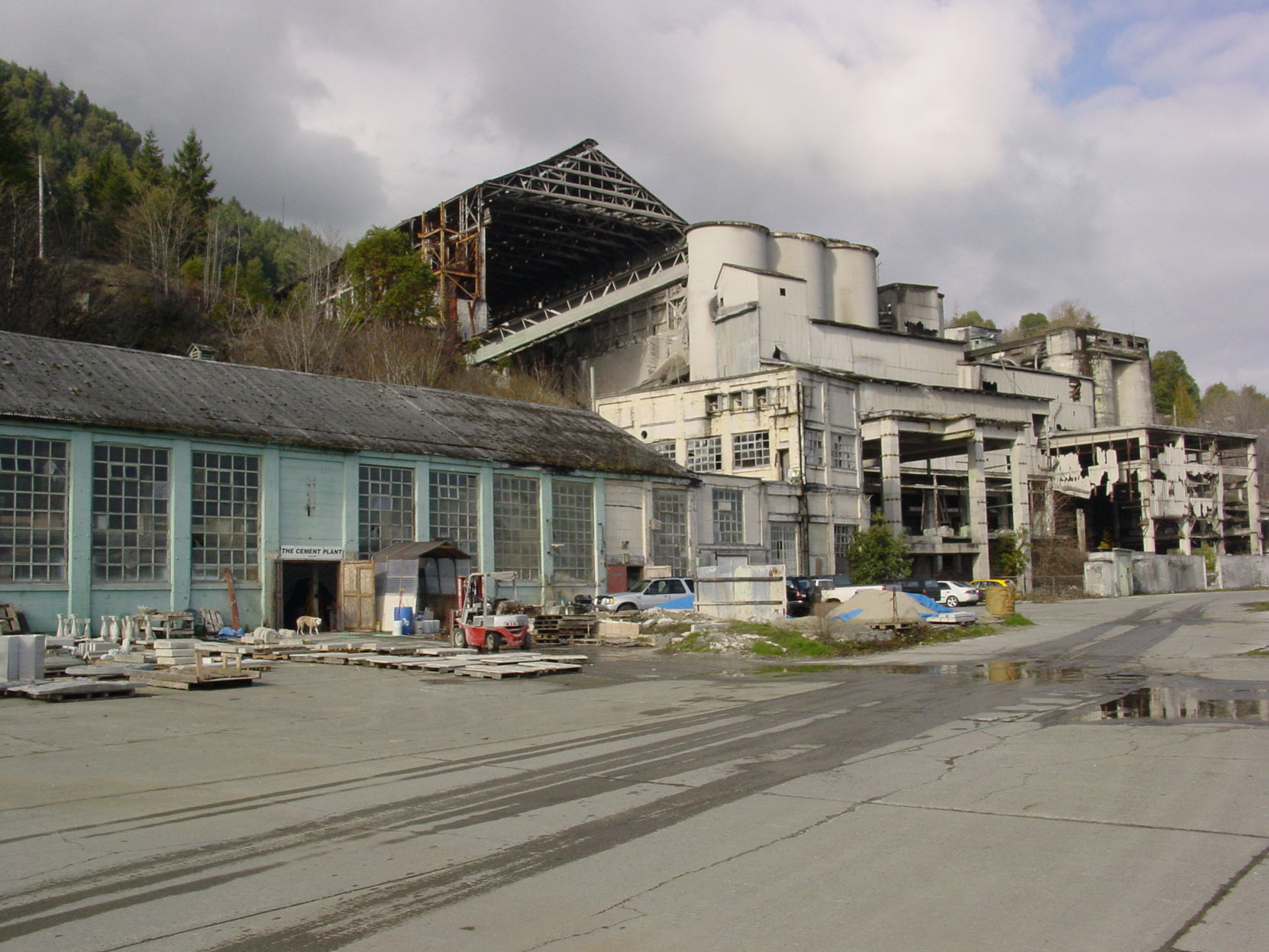
Bamberton cement factory ruins, 2004 (photo by author)
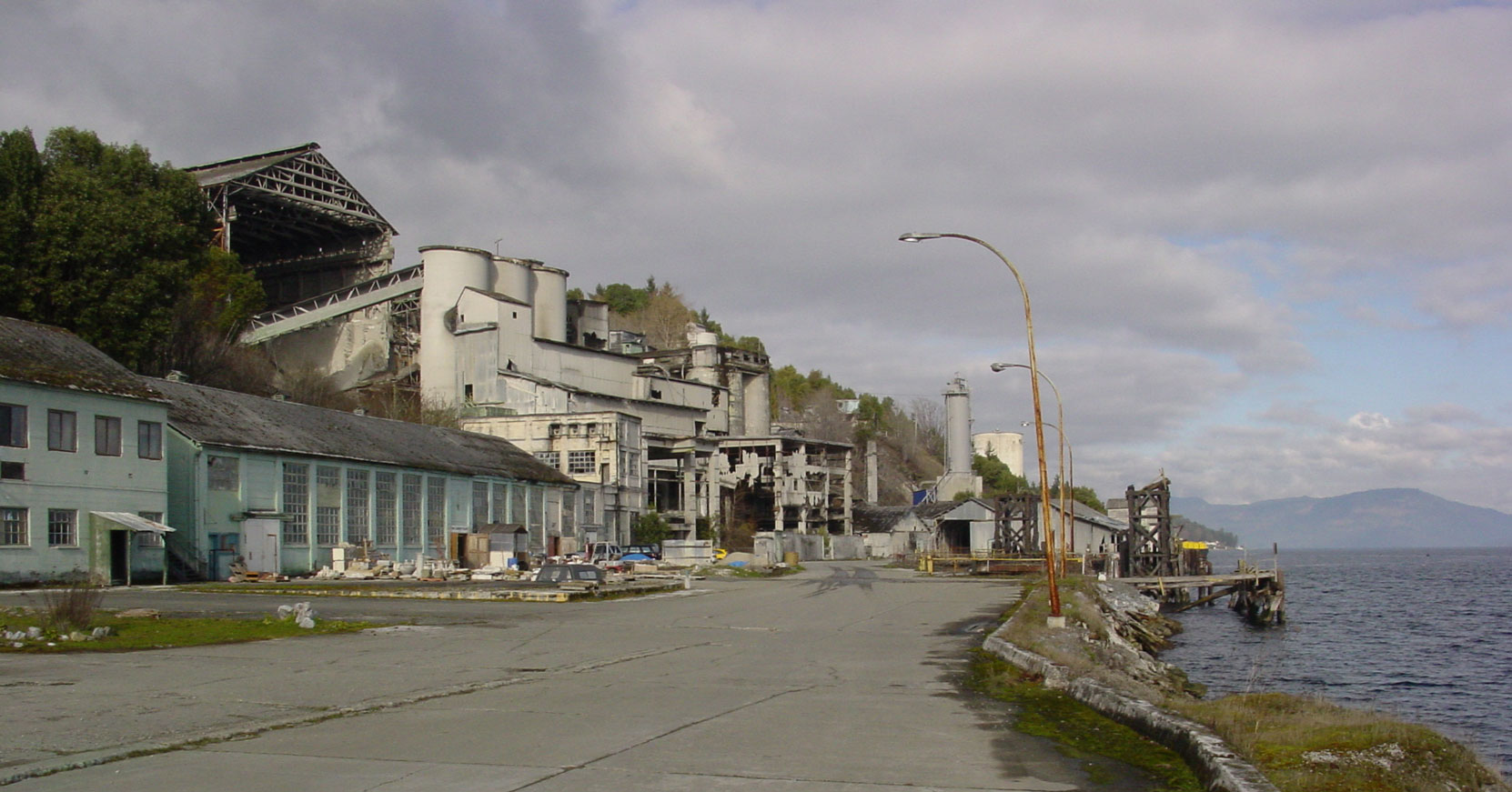
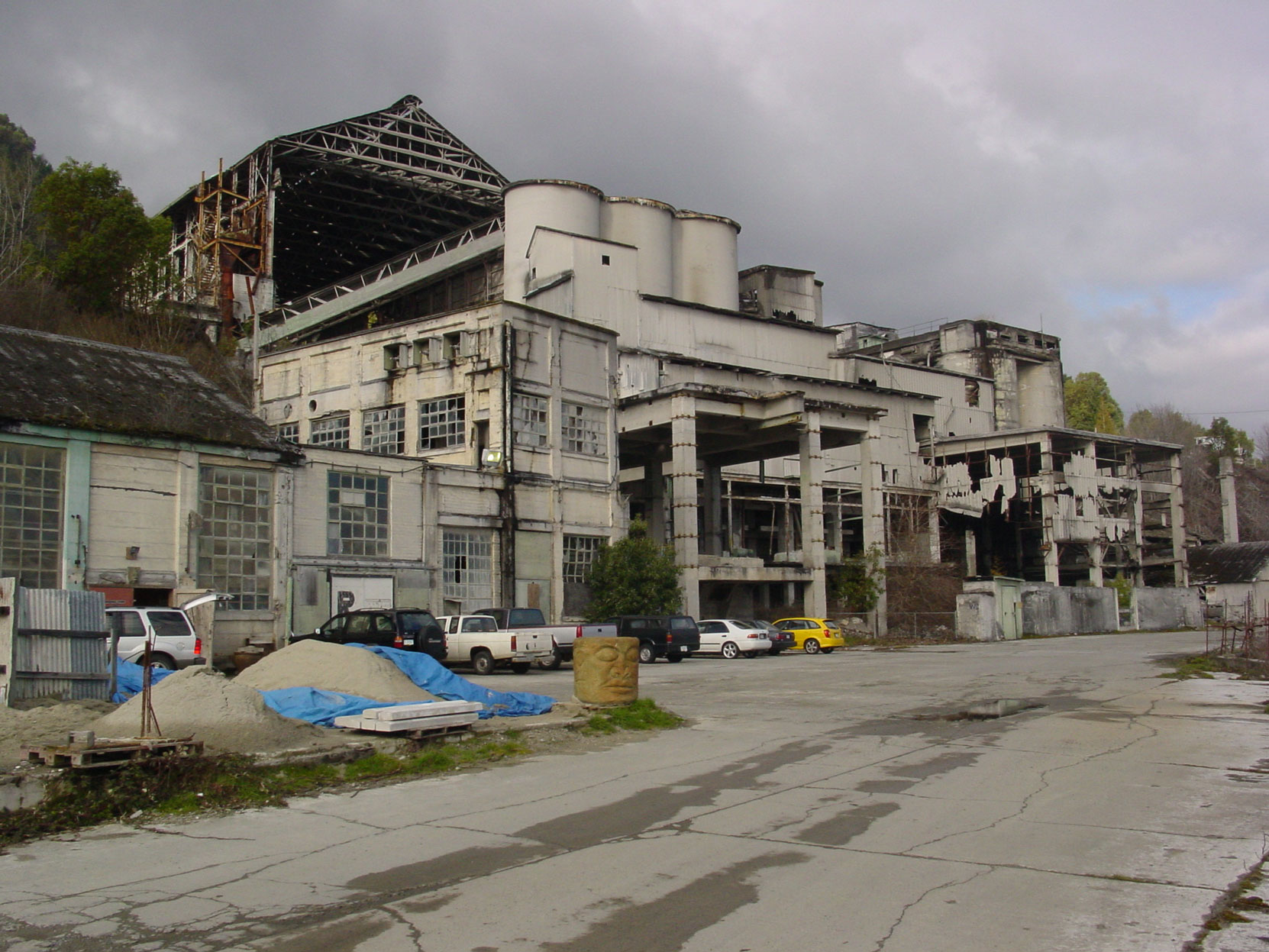
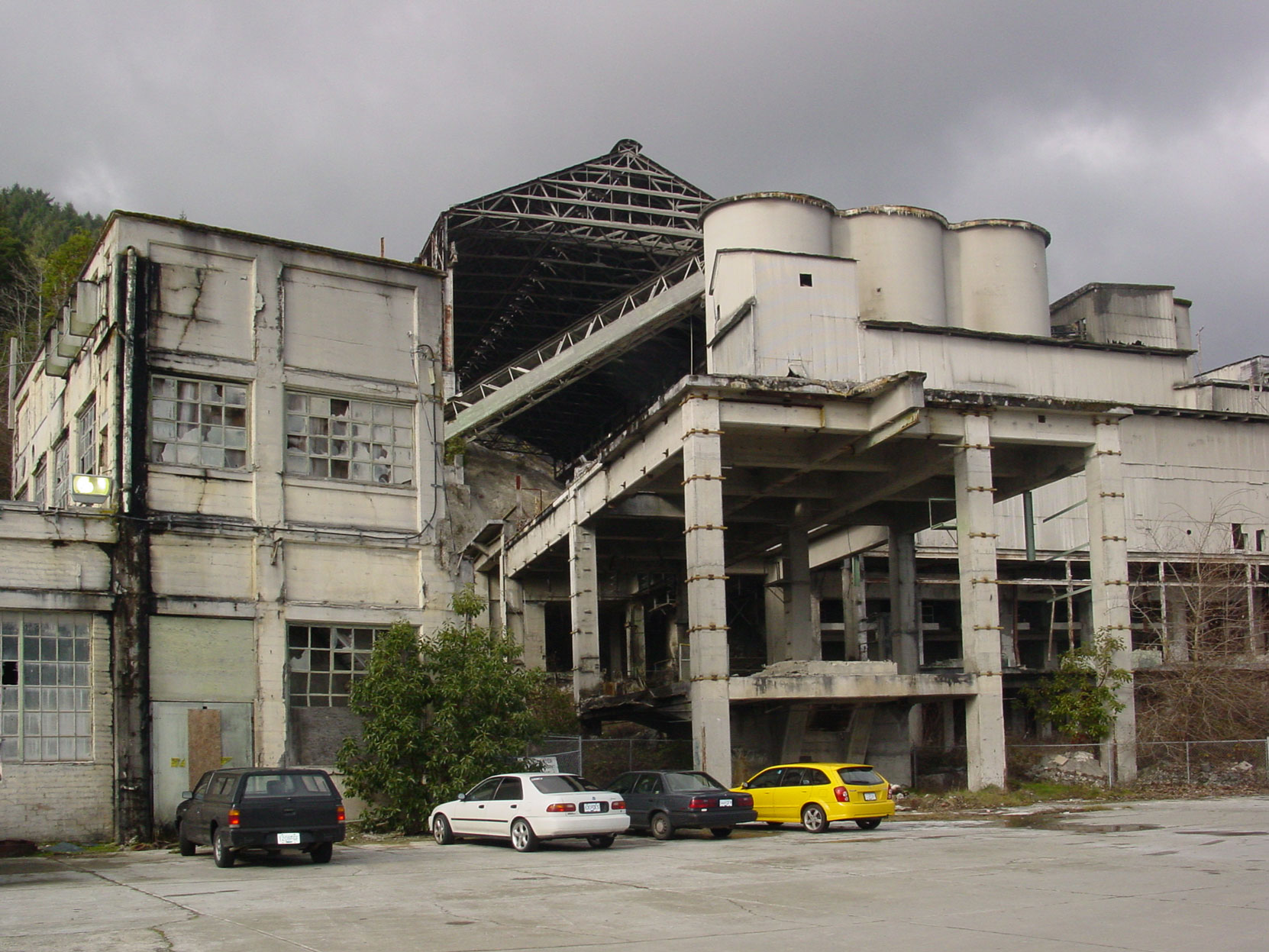
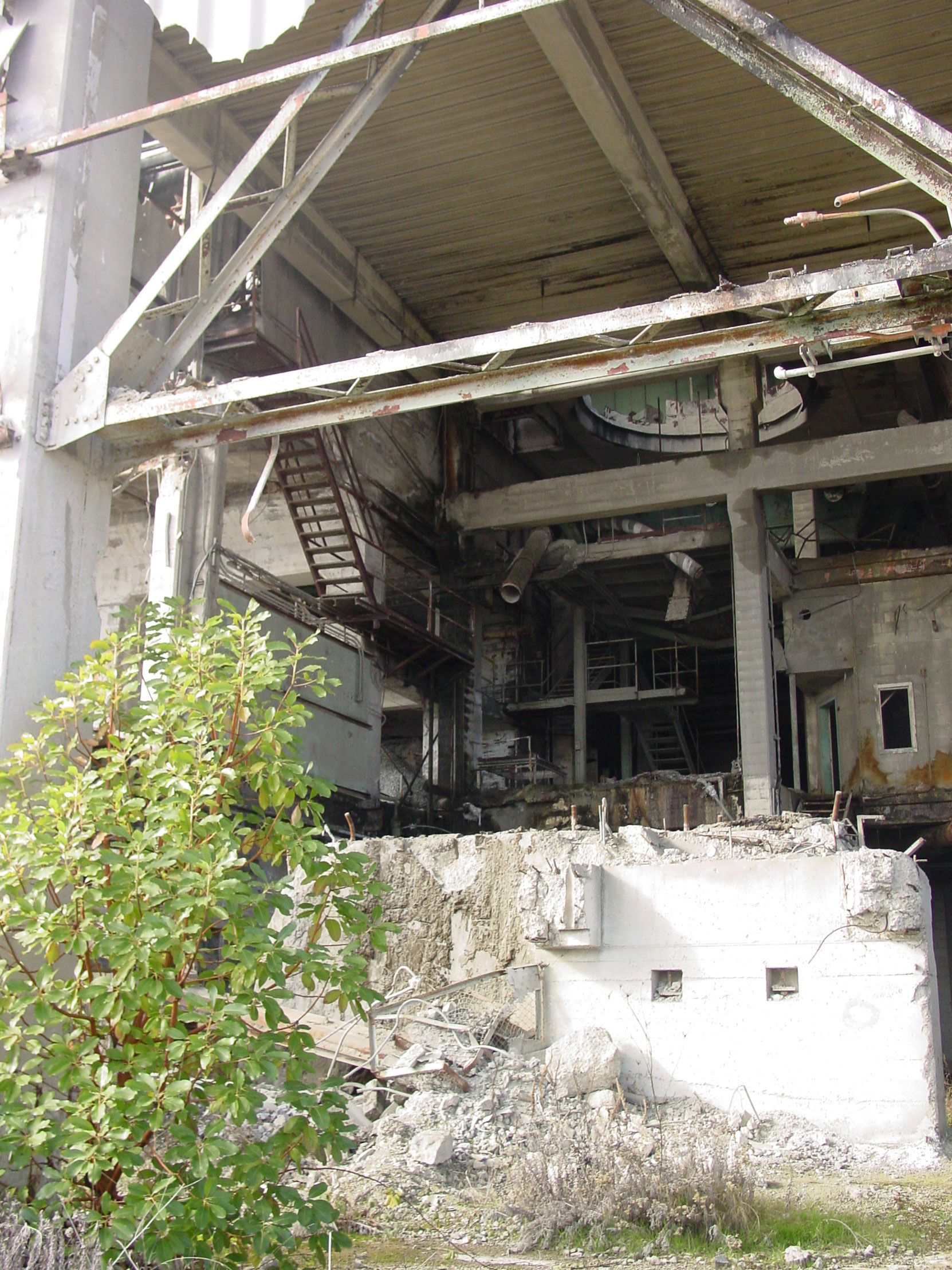
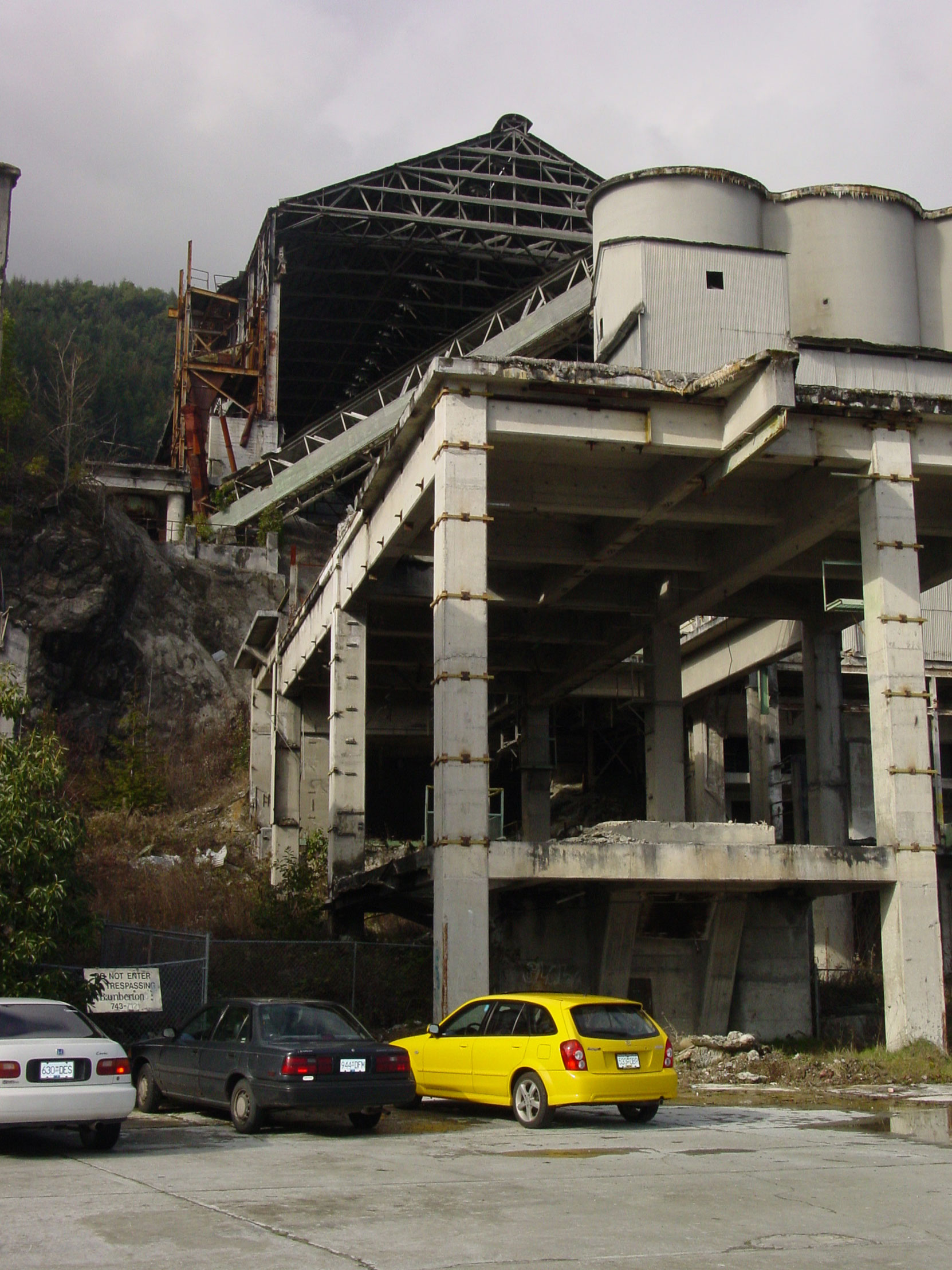
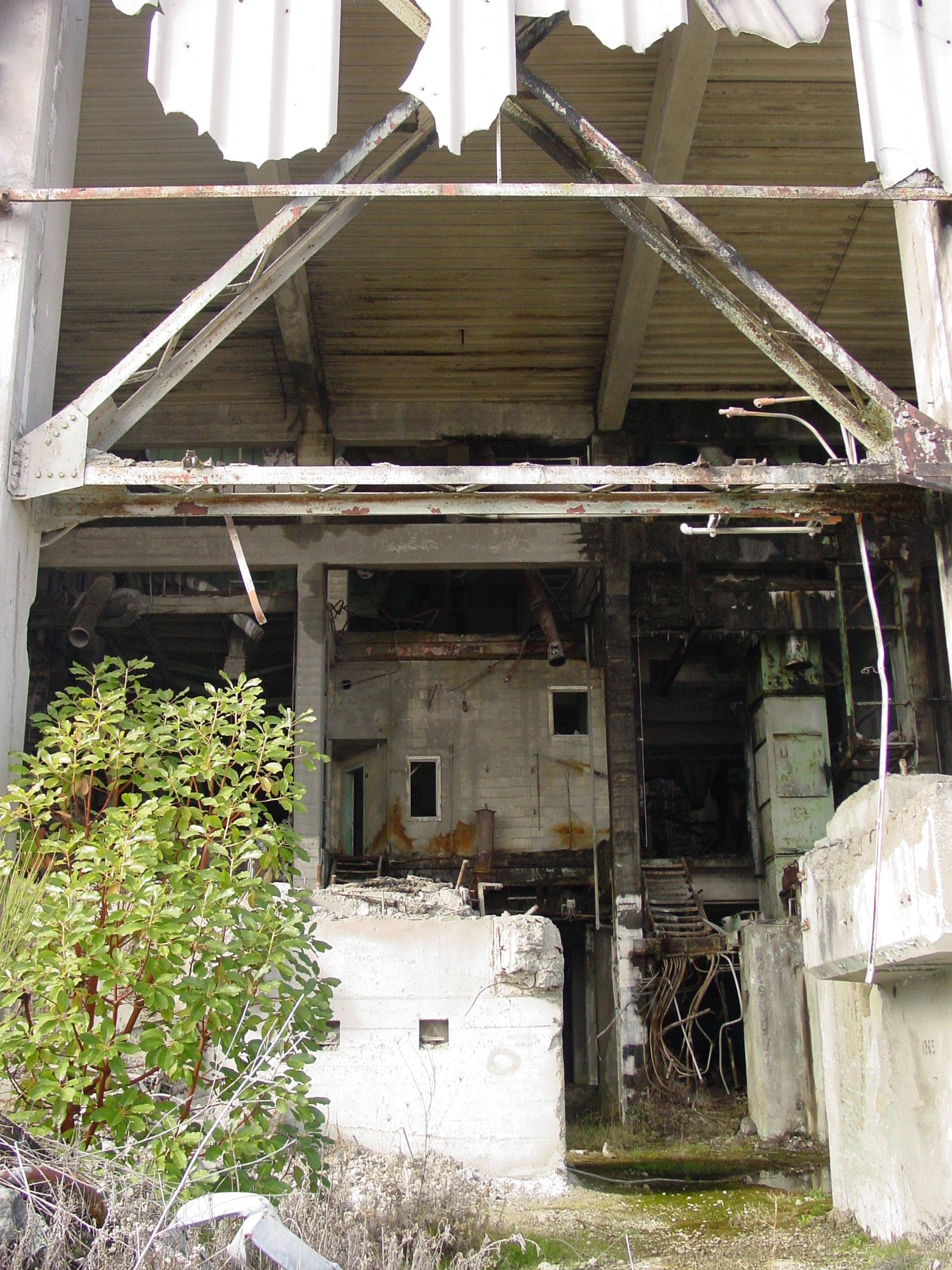
Would you like to leave a comment or question about anything on this page?

